How to mulligan correctly is one of the most essential skills to know when playing Hearthstone. But, it can be one of the hardest to master, especially in a new meta or if you are a new player. Thankfully, HSReplay hosts stats for nearly every deck from a sample size of hundreds of thousands of games. In this article, we’ll cover a brief tutorial on how to gather mulligan stats from HSReplay and then how we can use those stats in actual games.
Note: Some of the filtering features on HSReplay do require a Premium subscription. There is still much to learn without it though!
The Tutorial
When you go to HSReplay and click on the “Meta” tab, you’ll be presented with a list of the best to worst decks in the current meta. To find the mulligan stats, we have to click on one of those decks. For this article, we’ll use Murloc Paladin. If we click on Murloc Paladin, we’ll get to the general stats page for that deck along with the tab labelled “Mulligan Guide”. Clicking on that will show us all of the mulligan stats for every deck variation. It should look as follows:
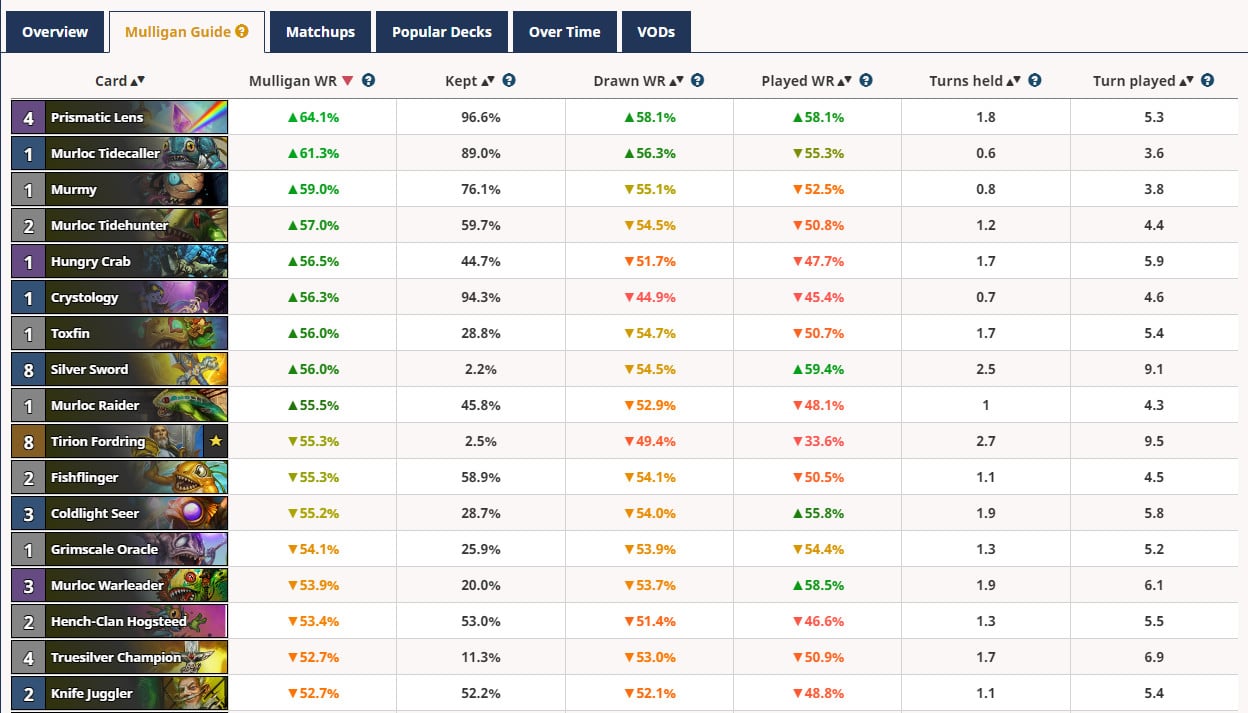
Here we can see each card along with its stats for each of the 6 columns. This page is beneficial if you’re looking to make changes to the deck and want to look at the stats for different card choices. But what if we want some more specific stats? For that, we need to click on the “Popular Decks” tab, and there we’ll see all of the different deck variations like so:

If you are looking for stats specific to your deck, you will want to click on the list that matches yours or at least gets close to it. For this example, we’ll click on the first list, and we’ll automatically be shown the mulligan stats as follows:
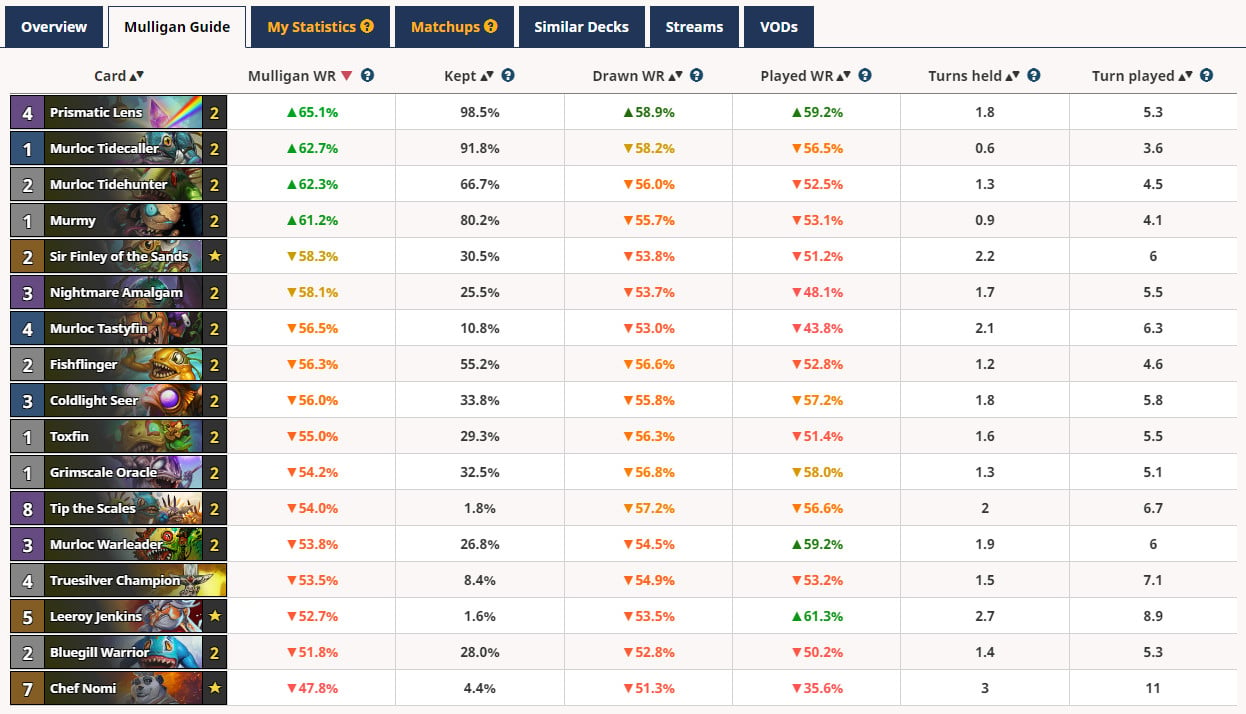
This is laid out exactly like the previous Mulligan Guide page except it’s specific to one deck. You may also notice some new options on the left-hand side of the page:

If you want to know specific mulligan stats when playing against a certain class, then you can choose that class from the “Select Your Opponent” box. Under the “Player Initiative” box, you can choose to view stats when going first or second. For example, let’s say we’re playing against Hunter and we are going first. We choose those two options, and we’ll see the stats below:
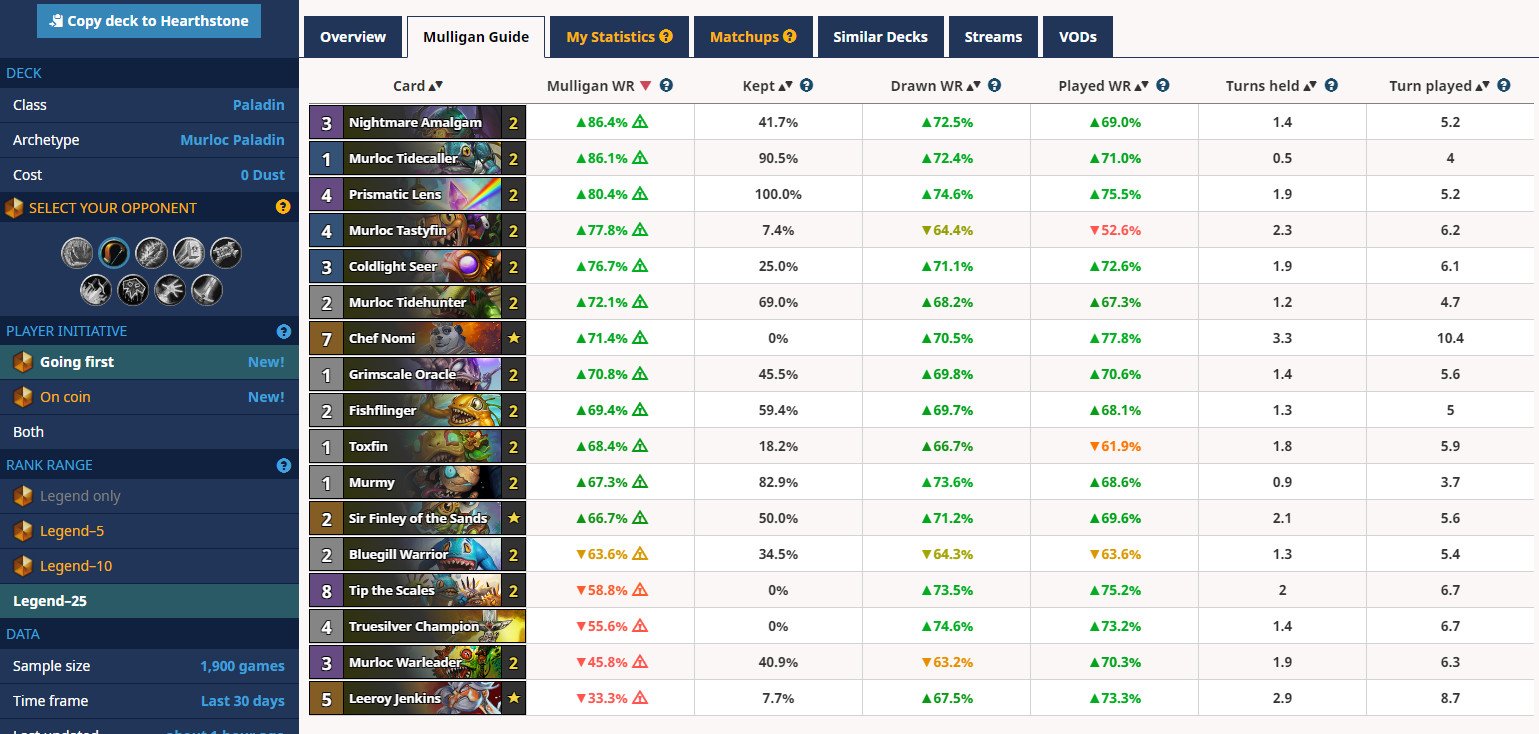
Using these filters, we can already see a huge difference in stats that gives us a good idea that going first against Hunter is greatly in our favor. We can also see different cards showing high mulligan win rates that weren’t showing up before.
How to Mulligan
Now that we know how to navigate through HSReplay let’s use this knowledge to develop 3 rules for mulligans.
Rule 1: Stats
The HSReplay stats are reasonably straightforward. Generally, you keep or look for cards with a high mulligan win rate. This is an especially helpful tool for new players as you can pick up a deck and already have a good idea of how to mulligan without having to spend countless hours playing the deck beforehand. There are some slight exceptions to this, however.
While the stats on HSReplay never lie, it is important to remember it matters how those stats are interpreted. If we look back at the previous example, we see that Nightmare Amalgam has an 86% win rate against Hunter but is only kept about 42% of the time. Meanwhile, Prismatic Lens has an 80% win rate and is kept 100% of the time. Another example of this type of discrepancy goes back to the wonderful days of Quest Rogue. For those newer to the game, Quest Rogue revolved around the card [Hearthstone Card (Caverns Below) Not Found] and played bounce effects like Youthful Brewmaster and Shadowstep to complete the quest, rewarding you with an oppressive board of 4/4 minions. At the time, the card Shadowstep boasted a high mulligan win rate but wasn’t kept that often much like Nightmare Amalgam. This caused a point of contention between pro players. Some thought you should always keep Shadowstep while others thought it was only worth keeping if you also had a minion to use it on. This brings us to the next rule, context.
Rule 2: Context
When deciding which cards to keep during the mulligan, you have to keep all of your card choices in mind. To demonstrate, let’s look at the stats of Highlander Hunter:
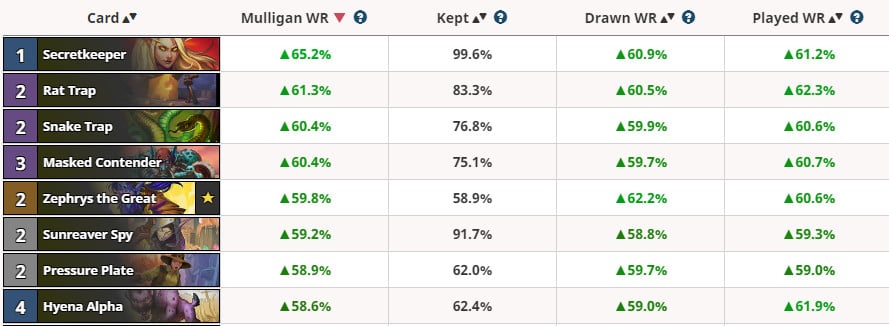
Masked Contender has a 60% win rate which should mean we almost always keep it in the mulligan. However, we need to remember the context in which this card is good. If we hold Masked Contender but don’t have any secrets, then it’s only going to be a 3 mana 2/4. With those stats, we’re better off keeping or looking for Animal Companion.
During the mulligan, it’s important to ask: is this card good by itself or good with any of the other cards I’m presented with? Some cards may be good enough to keep on their own like [Hearthstone Card (Secret Keeper) Not Found], Animal Companion, or Shimmerfly. Other cards work best if you already have certain cards in your hand like Hyena Alpha or Sunreaver Spy. A hand with [Hearthstone Card (Secret Keeper) Not Found], Rat Trap, and Hyena Alpha is worth keeping whereas a hand with Sunreaver Spy, Masked Contender, and Hyena Alpha may not. With that type of hand, you have none of the payoff cards; however, in some matchups, it may just be worth keeping in the hopes that you draw a secret in the first two turns.
Going back to the stats rule, you can use this new context rule to try and figure out if you should keep Nightmare Amalgam. On its own, Nightmare Amalgam isn’t a great keep. But, if you also have Murloc Tidecaller, a 2 drop Murloc, and Nightmare Amalgam then that’s a pretty good keep especially against Hunter who will have trouble dealing with that kind of curve. Statistics are a great tool to use with mulligans but also understanding context is key to up your mulligan game to the next level.
Rule 3: Gameplan
The final rule accounts for your overall gameplan. While you may build a deck with a specific gameplan in mind, this can often change depending on what cards you get in your mulligan. Going back to Murloc Paladin, the deck’s gameplan is to play Prismatic Lens, discount Tip the Scales, and generate a massive board by turn 4 or 5. This plan can change depending on what cards you get in your mulligan. Most of the time you want to hard mulligan for Prismatic Lens, but in some matchups, it might be a good idea to keep a hand with a good curve. The idea is to construct your gameplan with the cards you get—whether mulliganed or kept—and be flexible. Many players focus too much on a game plan they built the deck with in mind, and think they’ll hold on to cards until they can play them, when they’re “supposed to” adapt the gameplan with the cards they start with.
Let’s look at the old Bomb Warrior versus Cyclone Mage matchup for example. Players figured out playing cards on curve and being the aggressor in the matchup as Warrior was a viable strategy. It wasn’t odd to see a turn 4 Omega Devastator played even though you’re not “supposed” to play that card until turn 10. That’s because these players get their starting hand and construct the gameplan of being aggressive since that works with the cards they have. Remember, be flexible, mulligan with a specific gameplan in mind, and then play with the cards you have not with the cards you hope to draw.
To sum up, the three rules for mulligans are Stats, Context, and Gameplan. Know the stats for your deck and against certain matchups. Use that data to help with what cards to mulligan and what cards to keep. Keep in mind the context that certain cards are better to keep with others and aren’t as great on their own. Finally, have a gameplan in mind when you mulligan but don’t be afraid to change that depending on what cards you have. Construct a winning gameplan with the cards you have and go with it!
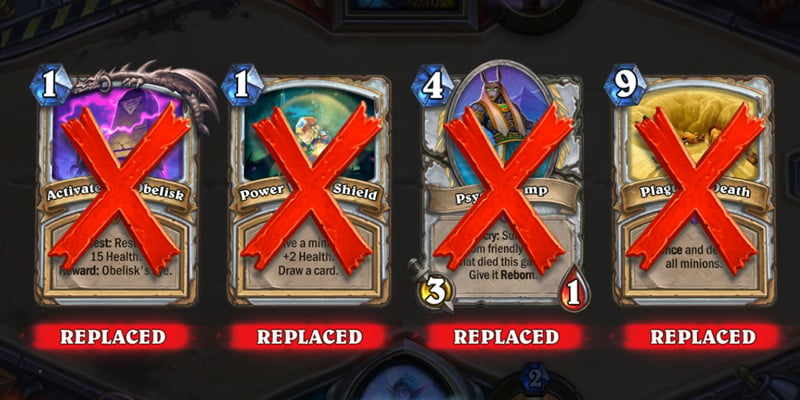
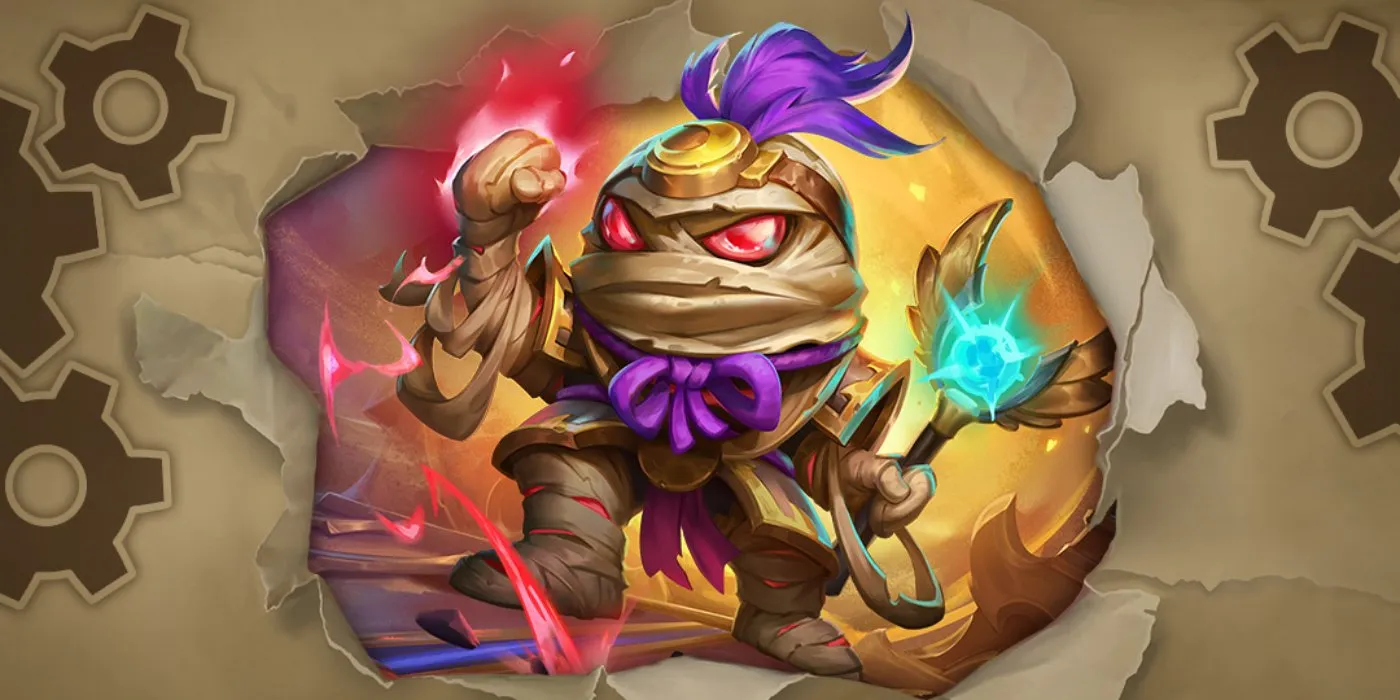
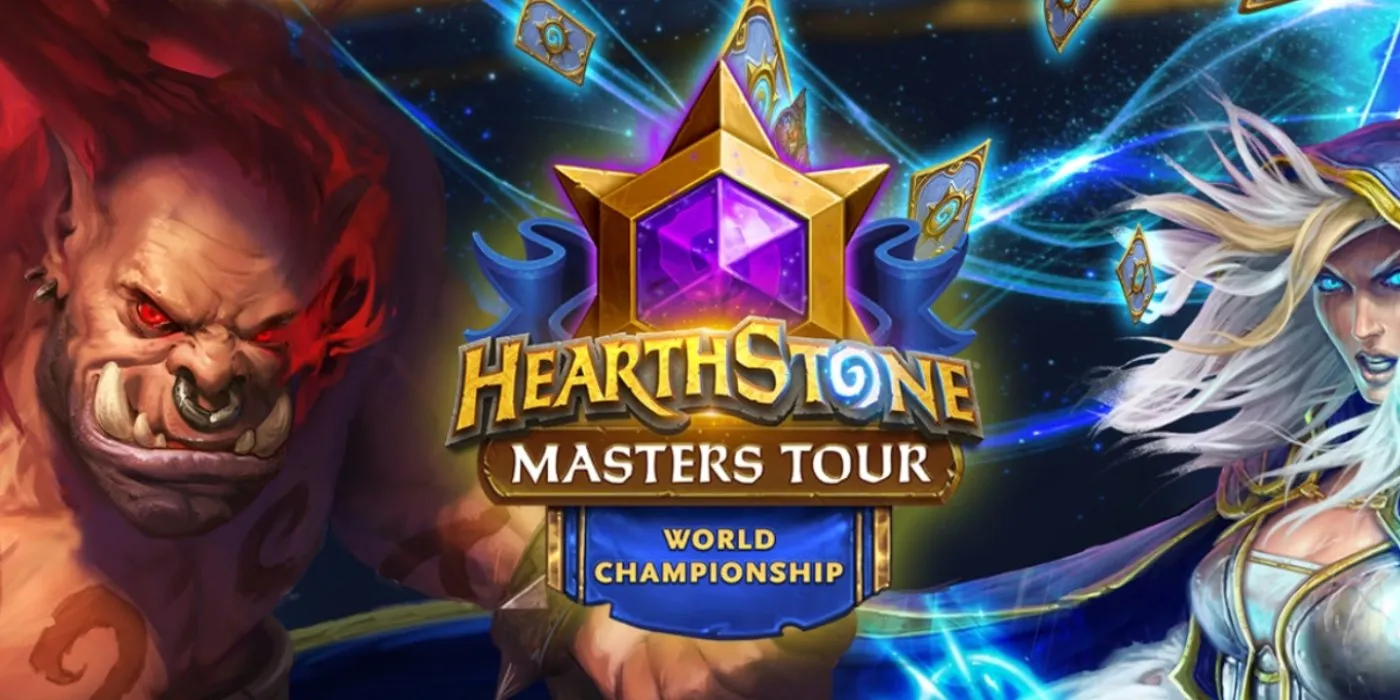

Comments
Great article. The premium membership is totally worth it for anyone still deciding.
Really great article! I would like to see more of this content in future and encourage you! A lot of work sure! But a great benefit for the player base!
What a nice guide. I'm sure it would be usefull to lots of people.
Well done once again.
Nice guide; it may be helpful for new players to mention some of the other useful features (particularly free-account features) on HSReplay... I've found it incredibly helpful as I play, but most of it I found through either stumbling around or a myriad of Google searches. As always, great content!
Great write up! I dont think having this when I started is what I would want for myself back then but I like having it now. Kinda glad I got to learn the hard way. TBH I didnt care about winrate for at least a year, maybe two. I was Just stoked to play and even more stoked when I won haha.
I think I learned more through experience than through any sort of statistic. HOWEVER- now I really love these stats on hs replay. There is so much great information and data to study and use to your advantage. I have been a premium member for quite some time!
I wish this guide existed when I first started playing HS, this would have been so useful.
Am I the only one that sometimes wishes this information wasn't out there? Don't get me wrong--I'd never fault any player for wanting to know how to play better or any service for wanting to inform players. It's just that in Hearthstone, the mulligan is so powerful and most serious players will either use sites like HsReplay or just imitate their favorite streamers so the end result is that doing a less-than-optimal mulligan will often cost you the game. Compare this with other games like MtG, where mulligan'ing is still important but since you have to cycle your entire hand its a lot harder for both you and your opponent to create the perfect opening hand.
Great guide!
Great guide! Though it should begin with a disclaimer stating that the features described require a premium subscription:/
Mulligan guide for exact deck is free, I do almost the same stat dig as described in the article myself with no subscription.
And mulligan guide for the whole archetype is near useless anyway. Just like coin and opponent filter, you can even see symbol on the screenshot that stats are compromised for chosen conditions due to low data sample and that is for murloc paladin deck...
You're right, that's a mistake that we should have caught!
I've had a premium membership for so long I forgot some of this wasn't basic features. With that said though, there is still plenty to learn here :D. A note was a dded to the top.